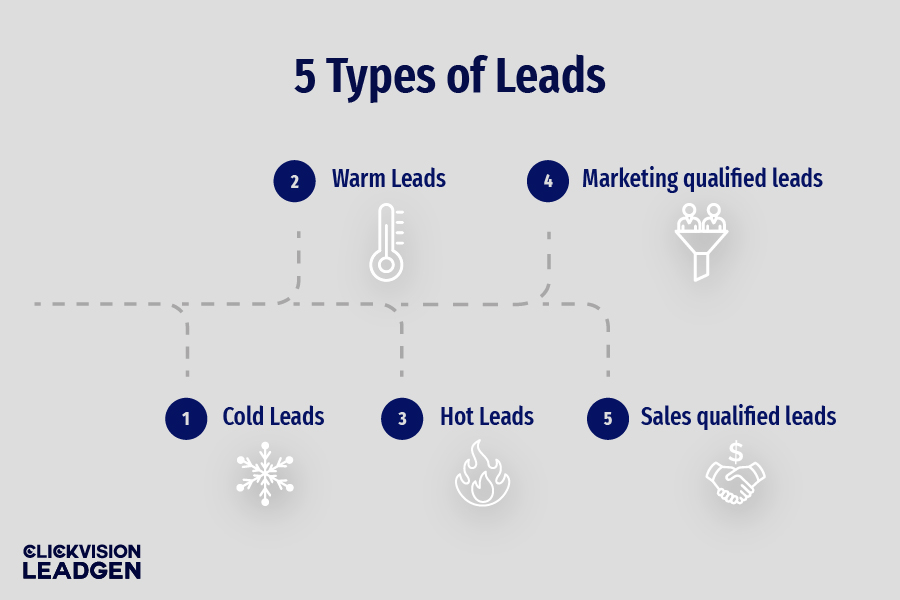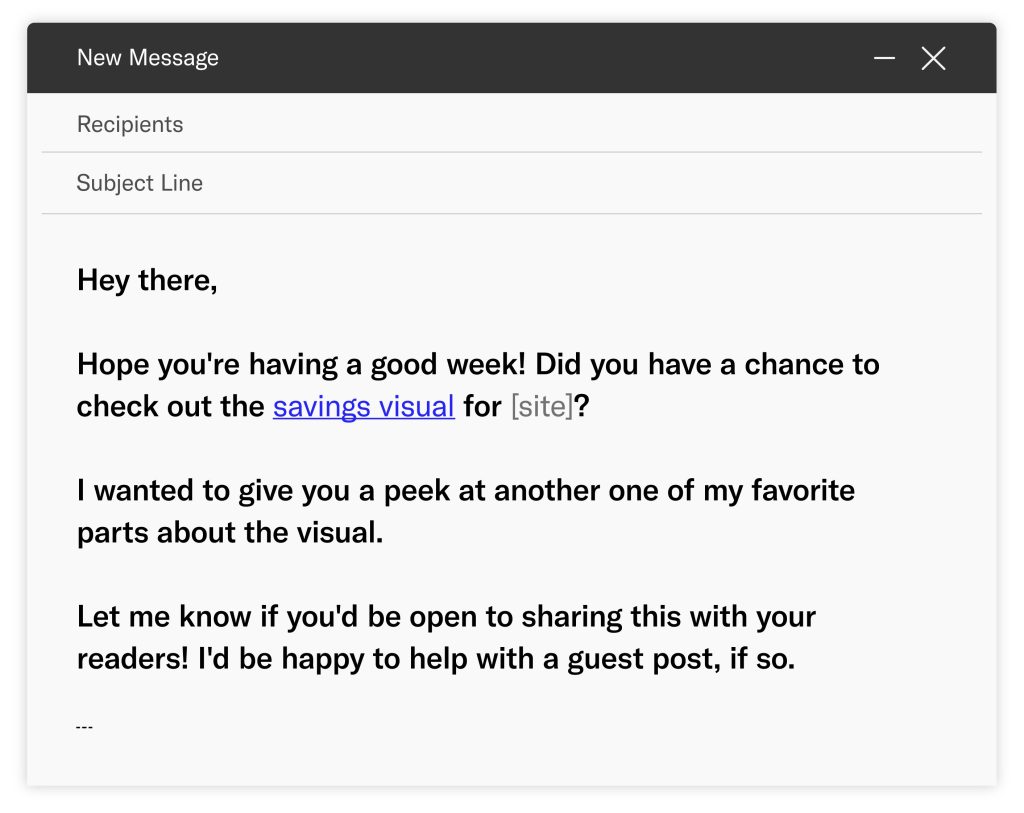In sales and marketing, lead generation is a critical component employed for driving organizational growth and success. For many companies, it’s the initial stage of the sales funnel. But exactly what is lead generation in sales, and why is it so important?
Below, we’ll elaborate on everything you need to know about lead generation in sales and marketing. Discover how this simple strategy contributes to building a robust sales pipeline, and learn how to overcome the most common challenges!

Types of Leads in Sales
Before diving into the different types of leads, it’s important to clarify what “leads” are.
Leads are potential prospects who have shown some level of interest in your product service. In the dynamic world of sales and marketing, we use specific terms when categorizing leads based on how close they are down the sales funnel
Cold Leads
Cold leads are prospects who have shown little to no engagement in your product or services, making them the most difficult prospects to convert. As they might be unaware of who you are or your company, the initial outreach is often perceived as unsolicited. It’s important to understand that these types of leads require significant effort to convert into prospects and involve a lengthy and consistent nurturing process.
The best ways to approach and nurture them to the top-of-funnel include:
- Utilizing cold calling or email introduction that clearly states your value proposition
- Personalizing your outreach and creating tailored content relevant to your audience
- Leveraging social media strategies to build relationships
Warm Leads
Warm leads represent individuals who still have no interest in making a purchase but are aware of your services and products. Unlike cold leads, these prospects have engaged and interacted with your brand before and recognize the value you bring to the table. As they’re already warmed up to your brand, it’s slightly easier to convert them into valuable prospects.
To handle these types of leads, you need to:
- Offer free trials or product demos, allowing first-hand experiences
- Host interactive webinars and events to promote engagement and build relationships
- Provide exclusive promotions to encourage purchases and promote a sense of urgency
- Implement CTAs to guide leads through specified actions
Hot Leads
Hot leads present prospects who actively seek information and engage with your content, demonstrating strong interest and purchase intent. Their readiness to capitalize on the value of your business provides an excellent opportunity for immediate conversion, demanding a proactive approach.
Some of the best practices to nurture hot leads include:
- Offer instant assistance
- Establish clear and responsive follow-ups
- Provide easy and flexible payment options
- Offer added bonuses
- Present time-limited offers or discounts
- Ensure a hassle-free and seamless check-out experience
Key Components of Lead Generation in Sales
To foster continuous growth and expand your customer base, you must establish effective lead generation strategies. However, maintaining a consistent and steady flow entails more than just adding contract forms to your site. It encompasses various elements to build a fully functional lead generation strategy.
First, you must recognize the importance of targeting the right audience. Create your ideal customer profile and personalize your approach, ensuring your messaging and solutions directly address their specific needs and interests. Without outlining their demographics, behaviors, and geographic locations, you might have trouble tailoring and customizing your strategies.
Next, you need to craft compelling and relevant content that resonates with your targeted audience. Provide valuable information regarding your brand, showcasing how your product or service can benefit their lives. This, in turn, helps attract new customers and retain existing ones, ultimately driving them towards making a purchase.
Lead Generation Tactics for Sales Professionals
Networking
Building relationships is key for a successful sale. The best way you can do that is through networking.
Begin by connecting with fellow industry professionals, companies, and potential prospects on social media platforms. This allows you to build a virtual bond that can help spread the word about your business, securing positive referrals about your brand.
You can also attend in-person events or meetups to get involved in your own community. This will expand your network and create personal relationships through face-to-face interaction, leading to valuable connections and potential leads.
Cold Calling
Cold calling is a powerful tool for lead generation. If done correctly, it can be a valuable asset for your business. It’s a process that involves sales solicitation from you to prospects who’ve never heard about your brand. Typically, it refers to phone-based conversations, but it can also include in-person door-to-door interactions.
Here are some of our effective tips to make your cold calls more effective:
- Conduct basic research and tailor your pitch accordingly
- Anticipate common objections and rejection
- Focus on value
- Engage with open-ended questions
- Follow up with calls or emails
- Utilize CRM to keep track of your records
If you’re unsure about cold calling techniques, explore and download our effective cold calling script.
Email Outreach
The last tactic we’ll mention is email outreach. It remains one of the most effective methods for generating leads. To maximize its potential, consider the following techniques:
- Personalize your emails and tailor your content
- Ensure your emails offer value, useful information, and relevant insights
- Each email should have clear CTAs explaining the next steps
- Plan follow-up strategies
- Use email marketing tools to track and optimize your strategy accordingly

Lead Scoring and Qualification
If you want to improve lead generation efforts and increase sales, you must understand the processes of lead scoring and qualification. While these two methodologies serve the same purpose of optimizing tour sales funnels, their approach and timing are quite distinct.
First, lead scoring is a point-based process that requires little to no engagement with prospects. It’s utilized in the initial stage of lead generation and involves assigning points or numerical value to leads based on factors like:
- Industry
- Company
- Job title
- Seniority level
- Location
But how does this contribute to lead generation? This strategy helps you identify and prioritize leads that are most likely to convert. However, remember not to discard cold leads as they still present an opportunity for you to expand your base.
On the other hand, lead qualification occurs later in the sales process, involving a more in-depth assessment to determine whether these leads meet the specific criteria that define your target audience. This will confirm that your prospects are not only interested but are also a good fit for your product service.
CRM and Sales Automation in Lead Generation
Implementing Customer Relationship Management (CRM) systems is the best decision you can make to manage your leads and potential customers through the sales funnel. It helps you better understand your prospects by providing comprehensive insights, enabling more personalized and effective communication to improve relationships.
Sales automation tools, on the other hand, are software solutions designed to streamline lead generation processes and automate various aspects through the sales funnel. They handle repetitive tasks from email follow-ups to data entry, allowing you to focus on converting and closing deals. But how do these two systems work together?
When integrated, CRM and sales automation create a perfectly tailored and personalized customer experience, promoting excellent efficiency and enhanced workflow. While they do serve different purposes, they maximize their benefits for actionable insights that can significantly improve your lead generation efforts.
Some of the benefits you’ll gain from integrating CRM and sales automation in sales strategies include:
Effective Email Campaigns
To create effective email campaigns driven by CRM insights, you need to focus on educating prospects about your brand and meeting the diverse needs of individual leads. Next, using automation tools, ensures timely and targeted communication with relevant content while saving precious time and reducing manual errors.
With CRM and automation, you will maintain continuous engagement and potentially, enhanced conversions.
Streamlined Sales Processes
Sending compelling and relevant content to potential customers at optimal times is the best way to accelerate the sales process.
As leads engage with your content, CRM systems track their actions, enabling you to easily score them based on their readiness to purchase. By prioritizing your leads, you can send a qualified quantity of leads to your sales team. This allows them to focus on prospects showing genuine consumer interest, improving efficiency and enhancing the overall effectiveness of your sales strategy.
Improved Data Management
CRM and automation tools significantly contribute to improving data management and operational effectiveness.
While CRM systems centralize and organize all lead information, making it easily trackable and accessible, automation streamlines collection and content input. By providing real-time insights and analytics, you can make data-driven decisions and optimize lead generation strategies.
Personalized and Automated Approach
Personalized and tailored approaches can make customers feel valued and appreciated by adjusting interactions and offerings to specific needs, preferences, and interests. Providing them with what they want when they want enhances their experience and satisfaction, leading to increased retention and likelihood of conversion.
CRM and automation allow just that. By effectively managing and delivering personalized content and responses at the right time, you can ensure consistent and timely engagement, ultimately increasing sales rates.
Evaluated and Measured Success
Evaluating and measuring success is integral to lead generation. You must keep track of the number of leads at various stages and their movement through the sales funnel.
CRM systems and sales automation tools facilitate this by providing real-time data and analytics. These metrics can enable you to monitor lead progress, identify errors, and optimize strategies. With this, you can ensure streamlined processes while maintaining quality lead management and generation processes.

Challenges in Lead Generation for Sales
Lead generation for sales presents its challenges. We’ll provide practical solutions and strategies for overcoming these obstacles.
Finding Quality Leads
Many businesses face a common challenge of attracting quality leads that are a good fit for their services or products. To overcome this, you must define a clear buyer persona and focus on targeted marketing strategies. While figuring out which ones are truly interested in your brand can be a real head-scratcher, utilizing data-driven insights and organizational collaboration can pave the way for increased lead generation and sales.
Lead Conversion
When it comes to nurturing and converting leads, a common challenge is maintaining engagement and interest over time until they’re ready to make a purchase. This stage is a complex process with many potential drop-off points.
However, to address this challenge, you need to implement automated email campaigns, provide valuable and personalized content, and maintain regular communication to keep leads engaged. Optimize the sales funnel to meet the diverse needs of prospects at every stage, ensuring a seamless journey from initial interest to final purchase.
Creating Compelling Content
Producing value content that resonates with your target audience and encourages them to take action is not always easy.
To overcome this, you need to comprehensively analyze your customer profile and understand the diverse needs and preferences of your target audience. Personalize and tailor your content toward specific pain points and interests, providing high-quality information and insights relevant to your audience. In turn, you can effectively engage your audience and drive success, ultimately, converting them into loyal customers.
Evolving Customer Behavior
Over time, customer preferences may shift due to evolving market trends and shifts in lead behavior. Keeping up with these changes and aligning your lead generation efforts can be challenging. It’s important to stay informed on industry trends, gather and analyze feedback from leads, and be adaptable in your sales and marketing strategies.
Budget Constraints
Limited resources can restrict your ability to invest in lead generation efforts. To ensure optimal success, you need to prioritize high-ROI lead generation tactics, such as content marketing and social media engagement. You can also optimize your sales and marketing efforts by focusing on highly specific keywords with lower competition. This can reduce demand and significantly lower your costs.
Measuring Success
Lastly, determining the effectiveness of your lead generation efforts and attributing results to specific activities can be a complex process. With the lack of measurable metrics, managing strategies effectively becomes a daunting task.
The solution is quite simple. Everything that’s measurable, such as email sign-ups, website visitors, or the number of leads generated, should be tracked and analyzed. Regularly review these metrics and take action when necessary. This will help you continuously refine your lead generation strategies for sales and optimize performance.

Conclusion
Understanding what is lead generation in sales is vital for driving organizational growth and success. It involves identifying potential prospects, nurturing their interest, and converting them into valuable customers through targeted strategies and solutions.
From handling various types of leads to leveraging CRM systems and sales automation tools, each step contributes to building a robust sales pipeline for your brand. Although you may be faced with several challenges, such as finding quality leads or adapting to evolving customer behaviors, you can easily overcome them with strategic approaches and continuous measurement of metrics.

Dimitar is a seasoned marketing specialist and the visionary behind CLICKVISION. With over 10 years in digital marketing, he excels in crafting marketing strategies that boost rankings, which in return increase leads, conversions, sales, profits, and ROI.
